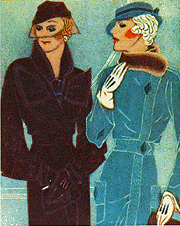 |
Gay & Lesbian Themes in Hispanic Literatures & CulturesGuest Curators: Augustus C. Puleo, Assistant Professor, Spanish
& Portuguese, Columbia University;
|
Hispanic Gay & Lesbian Issues
By James F. Crapotta
What we in the United States know as the Gay Movement is not as visible in Spain or Latin America. Hispanics are much more reluctant to self-identify as gay or lesbian. Gay liberation movements in the Hispanic world are much less present and less well organized than here. Indeed, many Hispanics perceive the gay liberation movement as an Anglo-American phenomenon, something imported and grafted onto indigenous Hispanic cultures.
Hispanic cultures perceive sexuality as something that is of the private and not of the public sphere. Homosexual acts and inclinations may be privately acknowledged, but rarely spoken about. A degree of closeting is endemic to these communities. Indeed, there is no Hispanic equivalent for the term "to come out."
In all but the most modern, foreign-influenced, trendy urban centers--Barcelona is the one with which I am most familiar--the family and, particularly in smaller rural areas, the community, are the groups with which the homosexual most clearly identifies.
I use "homosexual" advisedly, since what we consider lesbian and gay identities are in many ways not applicable to many areas of these cultures. The notion of one's sexuality as an essential marker of identity is in many ways erased by the identification with a community in which heterosexism rules.
Traditionally, those homosexual men who have publicly assumed their homosexuality have tended to self-identify with and be identified as women. The "marica," the "loca," the fairy, the pansy have, curiously, been allowed a certain leeway in Hispanic societies because, as "women," they are seen as powerless and as nonthreatening to masculinity. Rural villages in Andaluca have often accepted the equivalent of the village fairy within the community--he/she is of use to the community, doing "women's work" (sewing, mending, cooking) and serving as a sexual release for the men in the fields. In Jose Donoso's "El lugar sin limites" ("Hell Has No Limits") we find an example of the village fairy who identifies totally as a woman and is tolerated because he/she is a source of entertainment and ridicule when the men need to assert their machismo from time to time. Molina in Manuel Puig's "El beso de la mujer arana" ("The Kiss of the Spider Woman") is another example.
On the other hand, the masculine homosexual (the "maricon" in Spain), is perceived as more of a threat and as more dangerous to society because he is a "real man," could want sex from another "real man," and disturbs the heterosexual man's notion of what it means to be masculine.
In the United States we tend to label anyone who has a sexual encounter with someone of his or her own sex as gay, lesbian, or homosexual. In the Hispanic world the marker is the role one takes in the sexual act and not the gender of the sexual partner. That is, the partner who takes the passive position and is penetrated, is deemed the woman, the lesser partner, the one who is dominated. The active partner, the one who takes charge and penetrates is deemed the man, the one in control, the one who dominates. Thus, a man who penetrates another man is still considered, and still considers himself, a man, and a heterosexual man.
The first gay march in Barcelona, in 1976, was a movement led by maricas and transvestites. The macho clones, the "virile" homosexuals who modeled themselves on the more masculine-acting United States gays, stayed on the sidelines. Gay liberation has not necessarily been a liberation for all and it has not totally liberated the minds of gay men.
Lesbianism in Hispanic societies is rarely acknowledged, but lesbian theory can be found in some feminist tracts by authors such as Lidia Falcon. We are including lesbian writers in the course I teach at Barnard, "Reading for Difference: Lesbian and Gay Themes in Hispanic Literature and Film." But, curiously enough, the writings rarely celebrate lesbianism as a lifestyle or identity that is fully assumed in a native Hispanic context.
Perhaps our movement is not the ideal one for the Hispanic world. Perhaps, instead, its less-essentialist concept of homosexuality, one in which 'being' gay or lesbian is replaced by the notion of a society where sexuality is only part of one's identity--and not the defining factor of that identity--might actually be more liberating for queer men and women in this country.
-- Originally published in Community News. New York: GABLES-CU (Gay, Bisexual and Lesbian Faculty Staff and Supporters at Columbia University), April 1994.
Case Displays
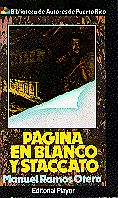
|
Manuel Ramos OteroRamos Otero, Manuel, b.1948. Pagina en blanco y staccato. Madrid: Playor, 1987. |
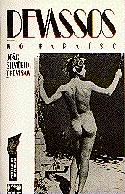
|
Joao Silverio TrevisanTrevisan, Joao Silverio, b. 1945. Devassos no paraiso. Sao Paulo: Editora Max Limonad, 1986.
|
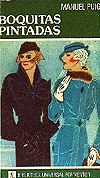
|
Manuel PuigPuig, Manuel, b. 1932. Boquitas pintadas. 3. ed. Barcelona: Seix Barral, 1982. Originally published, 1968. |
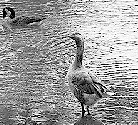
|
Luz Maria UmpierreUmpierre, Luz Maria. . . . Yotras desgracias: And other misfortunes . . . Bloomington, Ind.: Third Woman Press, 1985. |
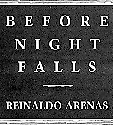
|
Reinaldo ArenasArenas, Reinaldo, 1943-1990. Before Night Falls. New York: Viking, 1993. Translation of: Antes que anochezca, 1990. |
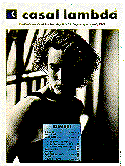 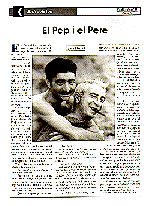
|
Casal LambdaCasal Lambda, Barcelona, Spain: Casal Lambda, May 1989 and June 1993 issues. "Casal Lambda es la revista gai degana dels Paisos Catalans i de l'Estat Espanyol." |
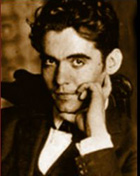
|
Federico Garcia LorcaGarcia Lorca, Federico, 1898-1936. Poeta en Nueva York, "Ode to Walt Whitman" IN Obras Completas. 18. ed. Madrid: Aguilar, 1973-74. Originally written 1929-30, while Garcia Lorca was studying at Columbia University. |
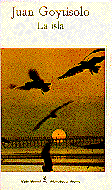
|
Juan GoytisoloGoytisolo, Juan, b. 1931. La Isla. Barcelona: Seix Barral, 1961. Originally published in France as Chronique d'une ile. |
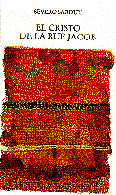
|
Severo SarduySarduy, Severo, b. 1937. El Cristo de la rue Jacob.
Barcelona : Edicions del Mall, 1987. |